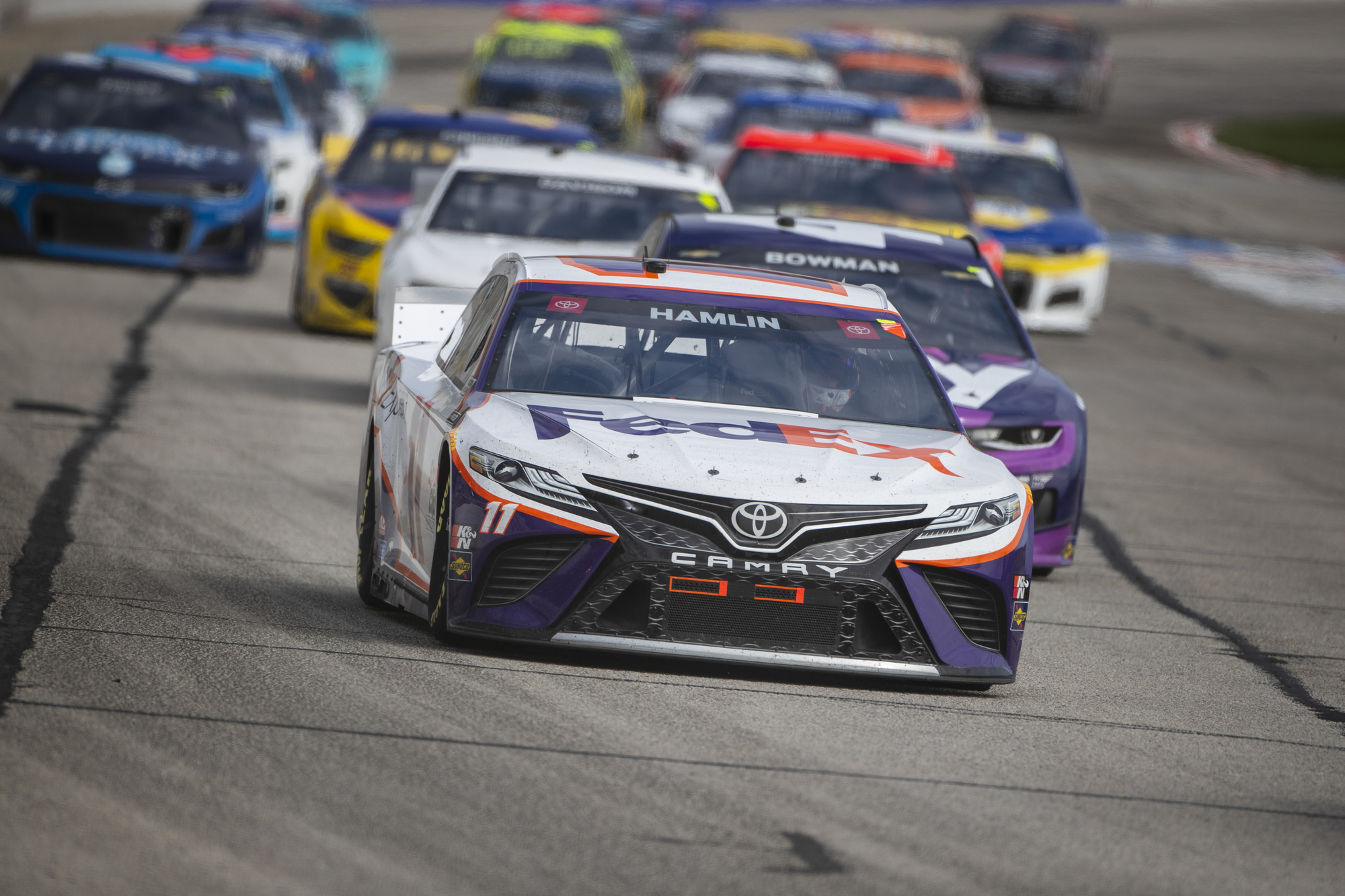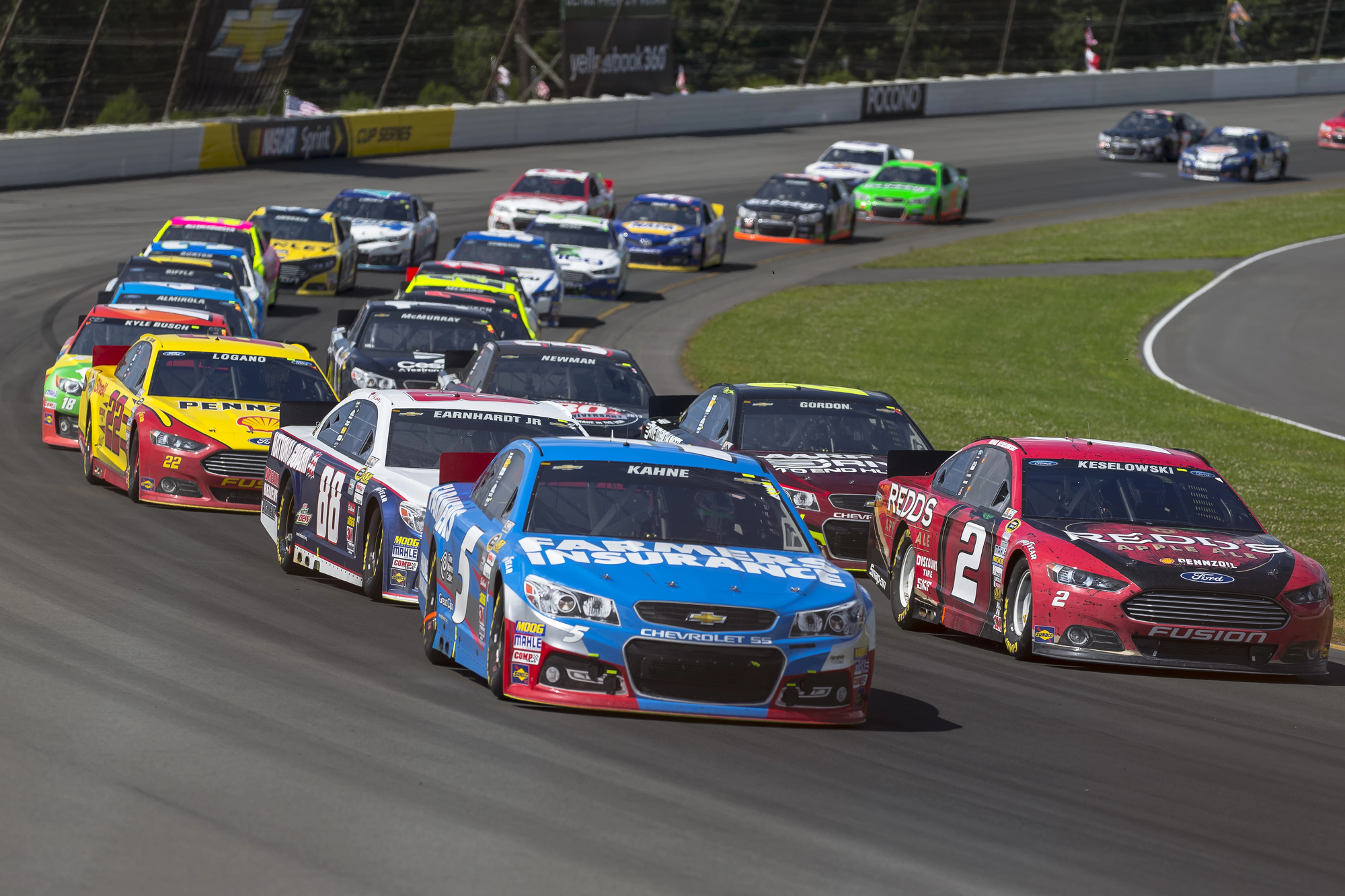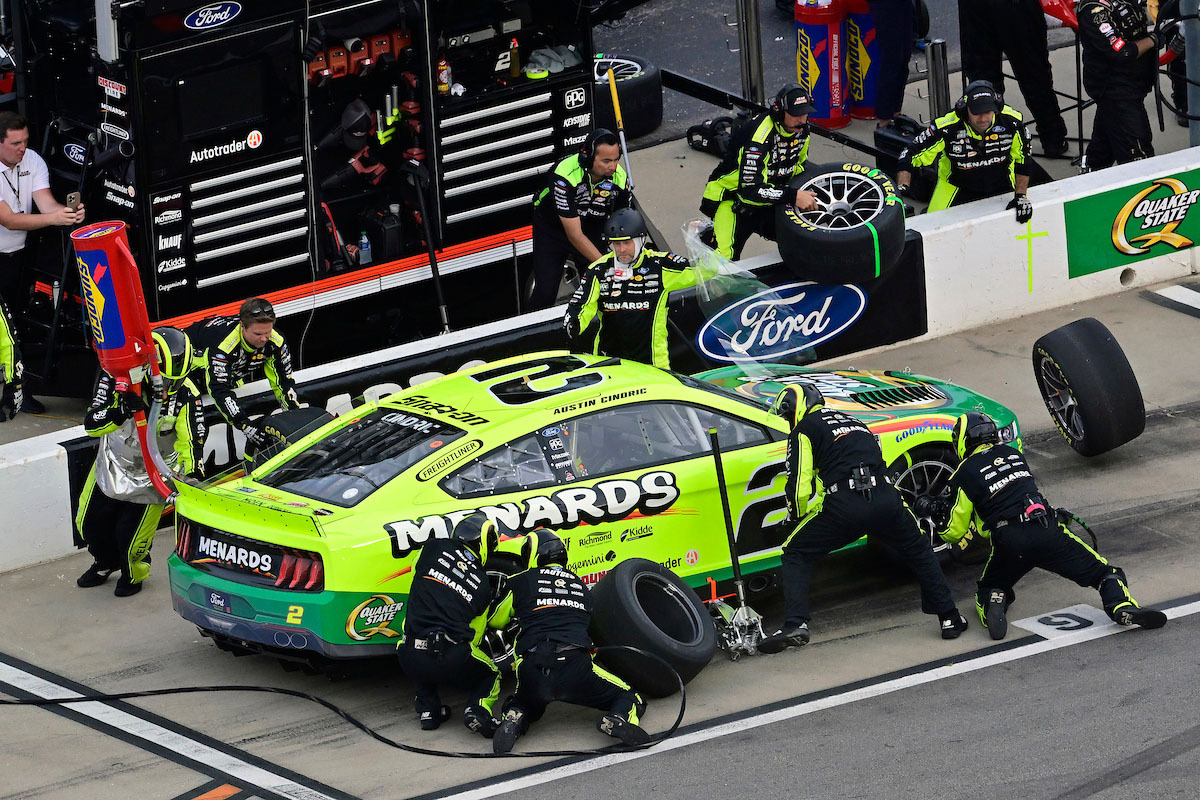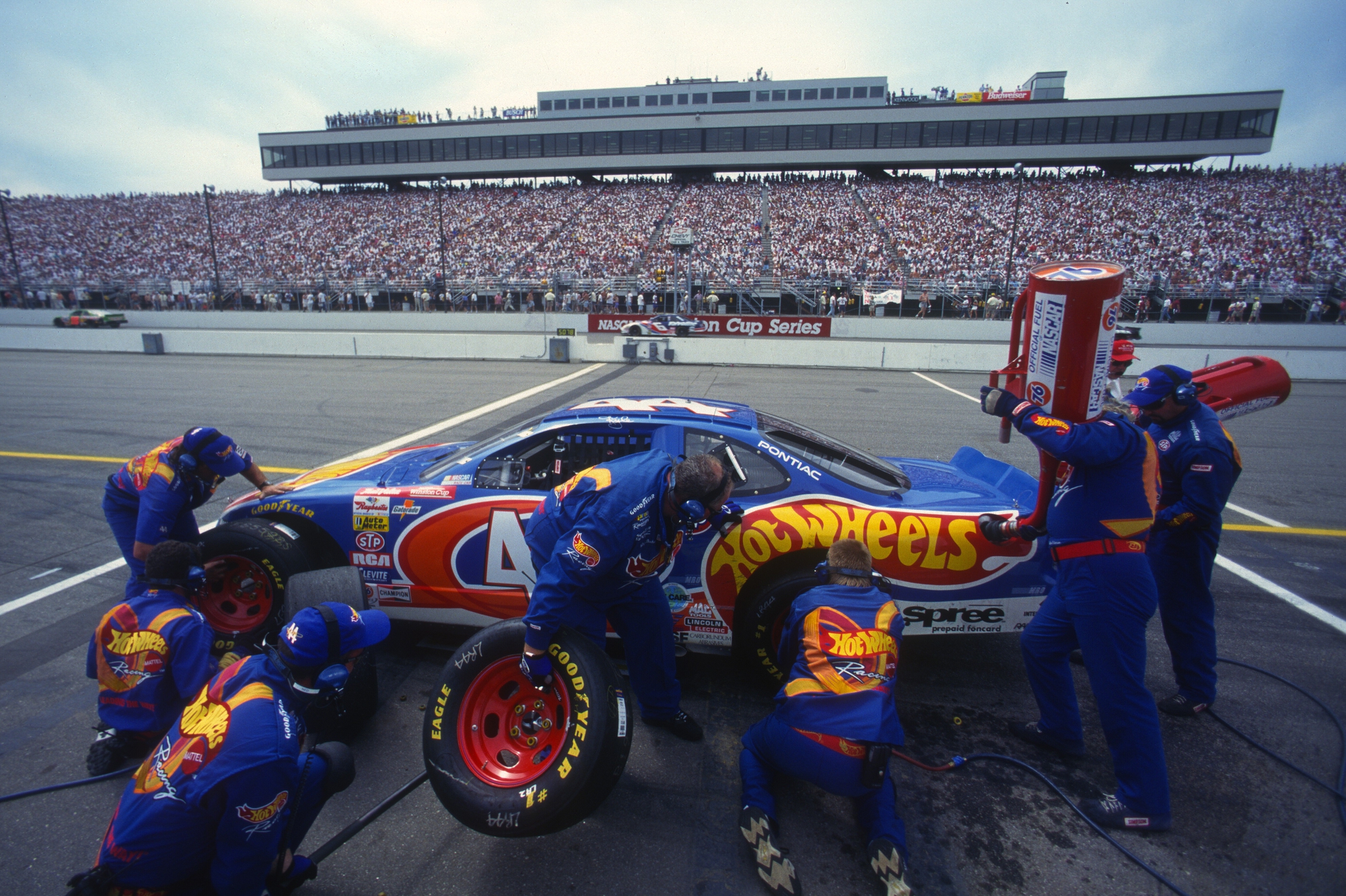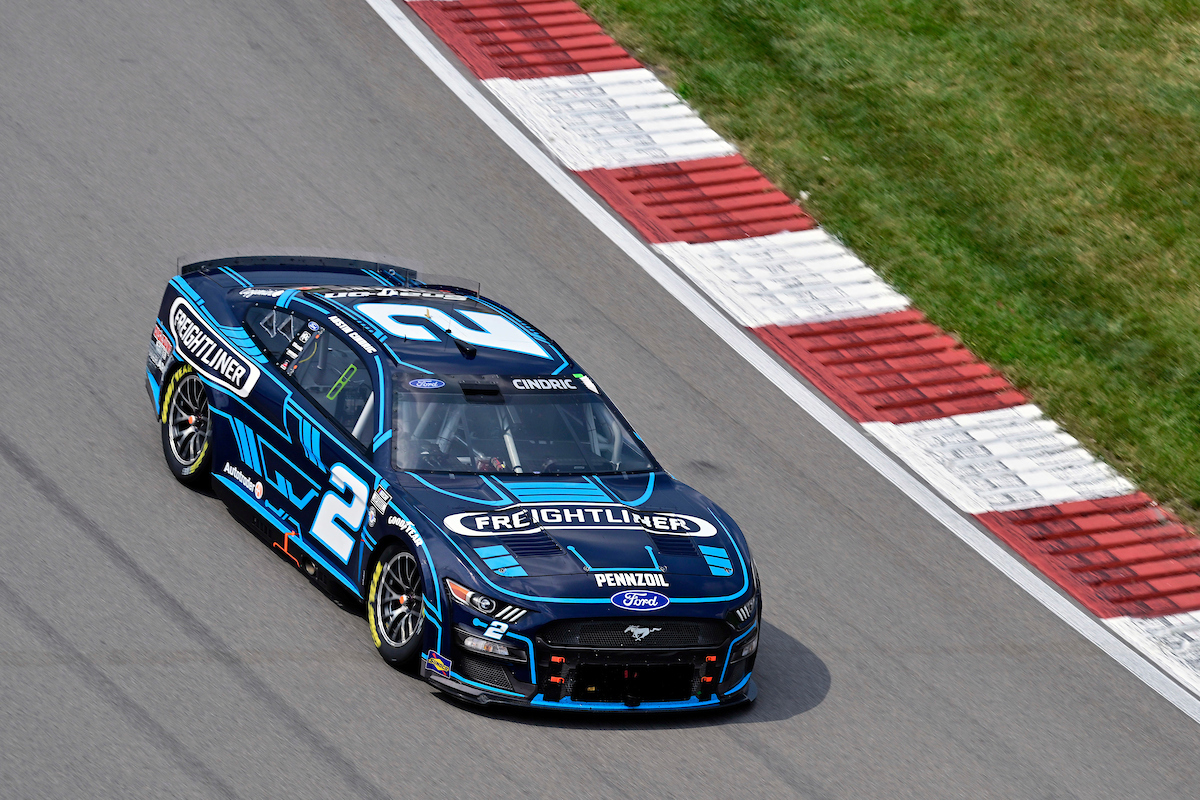A Beginner’s Guide to NASCAR
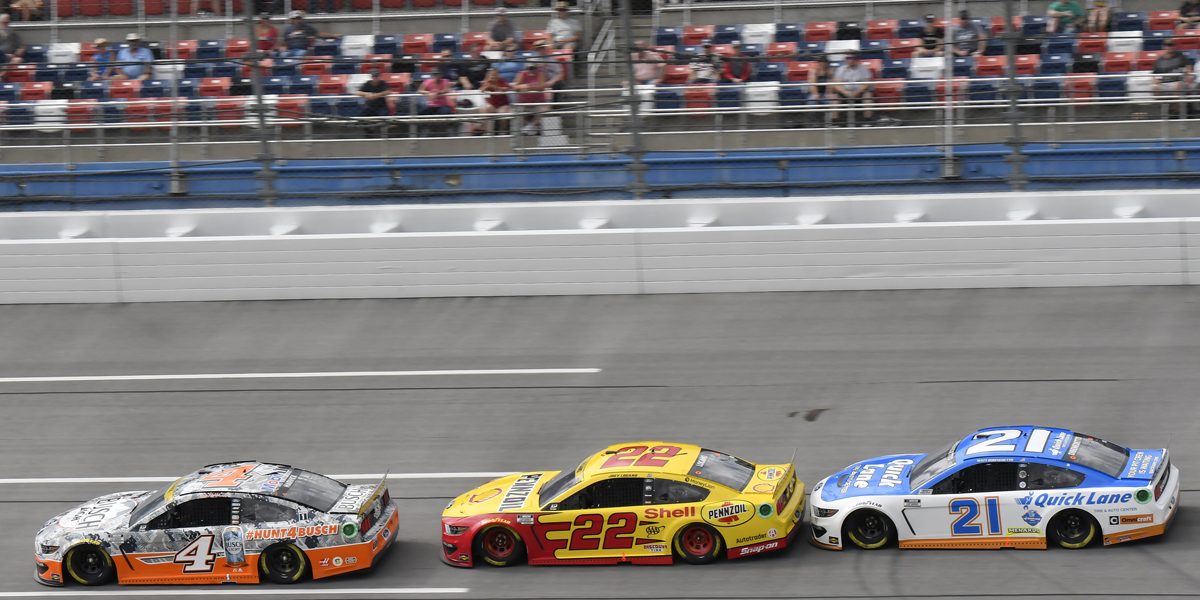
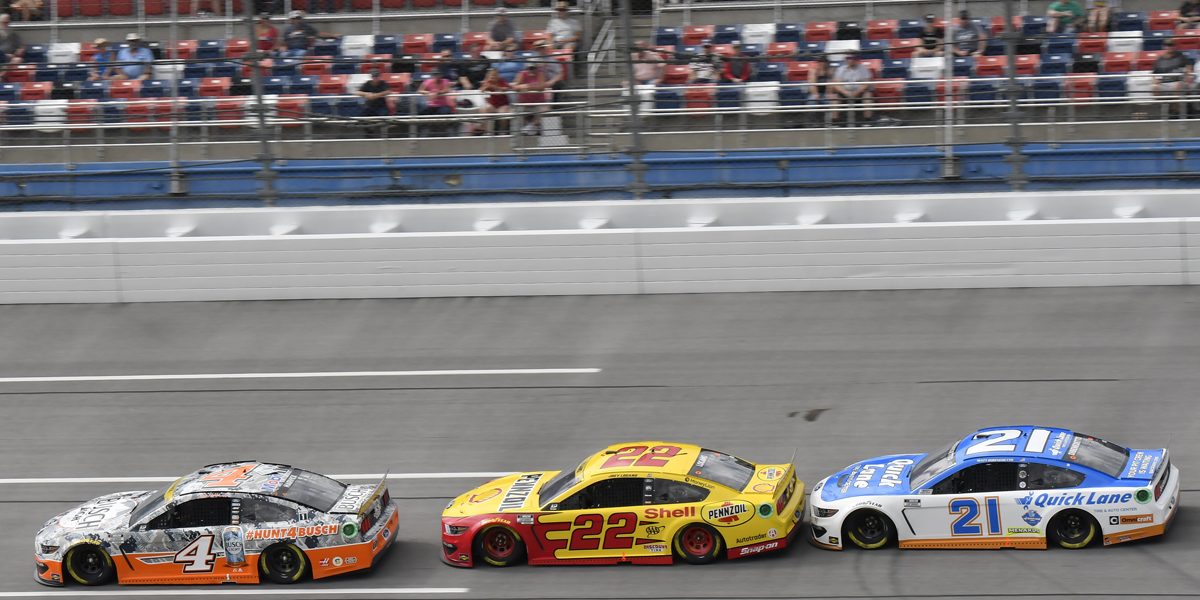
The National Association for Stock Car Auto Racing (NASCAR) might not appeal to a casual viewer who is familiar with Formula 1, Moto GP or even IndyCar. At first, it looks like a bunch of streetcars or trucks going around just finding out who is faster than the rest. To be frank, that was what NASCAR was when it was launched in 1948 by Bill France Sr. NASCAR has come a long way since then. Those cars are not just streetcars but are heavily fortified speed machines with every component of the car designed for maximum safety and speed.
It does take a while for a beginner to get into the intricacies of NASCAR. But rest assured that NASCAR is serious racing engaged in by professionals.
NASCAR has always been about racing with stock cars. The cars used in NASCAR racing are available to the common man in showrooms around the US and the world. NASCAR standards have however changed over the last century and a half. Most of these changes have been necessitated by driver and spectator safety. Other changes have been influenced by the need to give the audience their money’s worth. NASCAR has changed beyond recognition of the NASCAR of fifty years back although to a beginner the cars may look the same.
NASCAR’s origins date back to the 1920s when bootleggers use to tweak their engines to outrun the police vehicles during the prohibition. Some of the bootleggers got together and decided to race their vehicles against each other. The interest of the general public led to a growing number of contests. Bill France Sr. noted this and he also observed that the sponsors of the races were cheating the competitors of the promised purse. He decided to float an association that will formulate some rules for the contests and went right ahead with his plans.
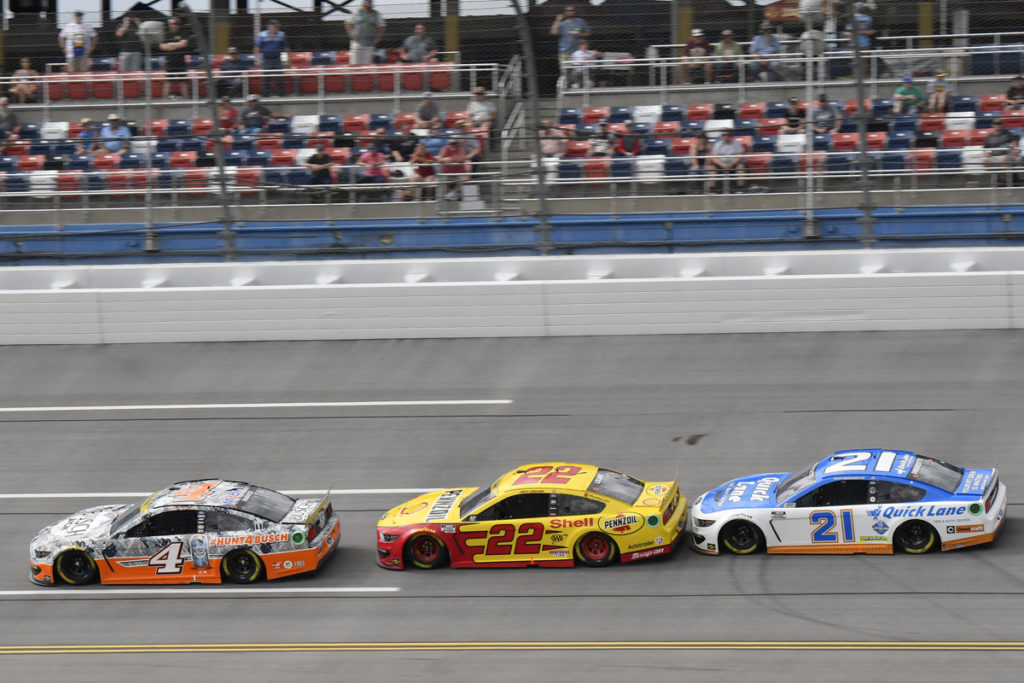
The cars that participate today in NASCAR are purpose-built for racing. Every part of the car is designed, engineered, constructed and built for safety, efficiency and speed. Every team aims to win a competition without sparing any costs. Although these cars and trucks might look like the ones that your neighbours have in their garages, they are built exclusively for NASCAR racing. The reason they look like stock cars is that NASCAR has always related with the common man and the commonly available car.
To understand this unique motor racing sport, the beginner has to come to grips with the format, rules and regulations governing NASCAR racing. The next step would be to understand the different series that the autos compete in and what kind of tracks they race on. Once that aspect is clear, the jargon used by the participants and the commentators will slowly fall in place. Here, we will try and give you an introduction to NASCAR racing and explain a few commonly used terms and phrases.
Keep reading for the ultimate guide to NASCAR that veteran and new fans alike will need.
Table of Contents
Guide to NASCAR
How many series are there in NASCAR?
NASCAR has three different main series that use stock vehicles to race in the US. They are the Cup Series, the Xfinity Series (Nationwide Series) and the Truck Series. The Cup Series is the flagship series of NASCAR while the Xfinity Series is seen as a stepping stone to the Cup Series. Stock cars race in both these series. But the cars racing in the CUP Series are more powerful than that racing in the Xfinity Series. The NASCAR Truck Series sees pickup trucks racing for the glory of the cup but does hold its own among the other series.
As mentioned before, all vehicles racing in the three series are stock vehicles. They are fitted with 5.86-litre, V8 engines and have 4 gear manual transmissions. The cars racing in the Cup Series have a power output of 750 horsepower. The vehicles in the Xfinity and the Truck Series have a lesser power output of 700 horsepower. The speed reached by the cars in the Cup Series sometimes exceeds 320 kilometres per hour while the Xfinity and Truck Series is not too far behind. The cars cannot exceed 3.200 lbs or 1450 kgs of weight.
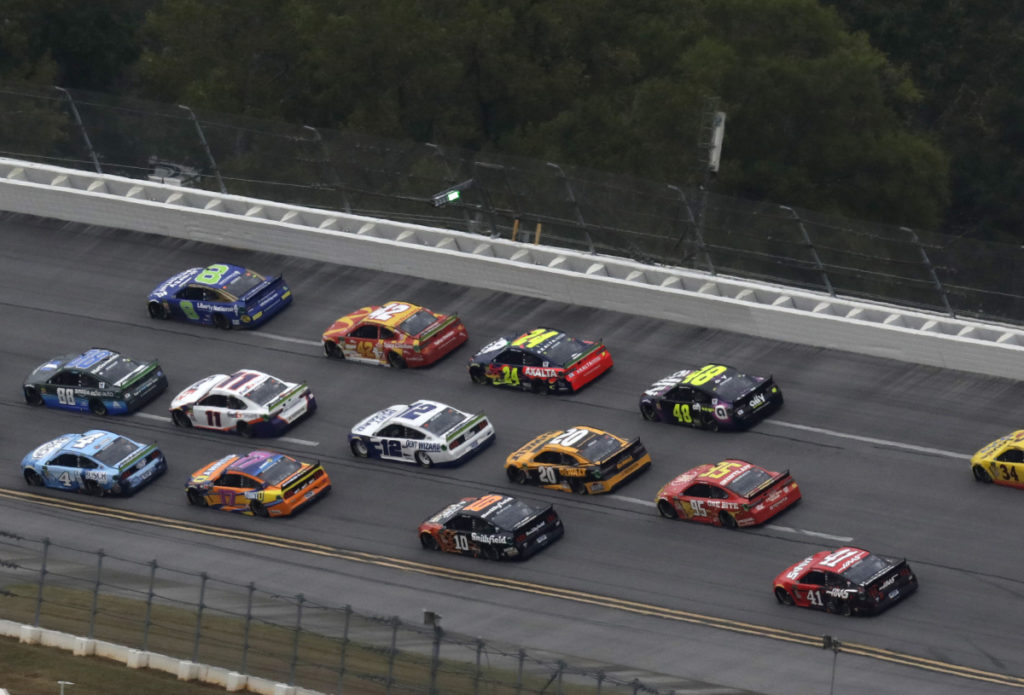
NASCAR has maintained the principle of racing only stock cars. The manufacturers supplying the cars have to make the very same cars to the public. The cars racing in NASCAR are allowed modifications for better safety and speed in that order. But any common man can walk to a showroom and purchase a car that has won a NASCAR race. That is the reason for NASCAR’s popularity and why it is the most-watched event on television after the NBL.
What circuits do NASCAR cars race on?
NASCAR organises 36 races per season. These races are held on four types of tracks, each of which holds its own appeal to the spectators and audience. The different tracks are speedways, superspeedways, short courses and road courses. Speedways and superspeedways appeal to fans because of the sheer speeds the cars reach when racing on them. Shor courses are the ovals and have a circuit length that is smaller than that of speedways and superspeedways. Road courses have more turns on them and have many stops and start. Races on these courses can throw up surprise winners.
Speedways have a circuit length of two and are fast courses. They may be either triangular or rectangular with wide banked turns. Superspeedways are longer and broader than speedways and allow cars to reach phenomenal speeds. NASCAR uses restrictor plates to limit the speed of the cars on superspeedways. The ovals are much shorter than the previous two and their tracks are less wide. This makes overtaking more difficult. Road courses are traditional tracks used by the public when there are no races scheduled. These are the only tracks on which wet racing is allowed with wet tyres.
How do NASCAR races differ from other races?
NASCAR races differ from Formula 1 because they use fortified modified stock cars. Formula 1 and MotoGP use designed and purpose-built vehicles to race on specially built tracks. A Formula one team spend hundreds of millions of dollars to build, test and maintain their cars while a NASCAR team spends two to three million on a car. NASCAR races, on the other hand, are held on widely differing tracks from superspeedways to road courses. NASCAR rules for the cars as well as for the races too differ from the ones that regulate racing in Formula 1 and MotoGP.
The number of laps that the competitors have to complete is specified before the race begins. The races are typically around 500 miles (804.67 kilometres) long and the number at the end of the course name signifies the length of the race. The Talladega 500 course is 2.66 miles (4.3 kilometres long) and drivers have to complete 188 laps to decide the winner. NASCAR cars do not race in one stint unlike in Formula 1 cars. A NASCAR race is run in three phases to make the race more exciting. This allows the drivers and their crews a chance to discuss and revise their strategy after every stage.
At the end of stage one, a green and white chequered flag and then a caution flag is shown to signify the finish of the stage. A pace car comes onto the track to slow the cars down. Drivers are allowed to pit and can take the opportunity to change tyres before the start of the next phase two. The top ten drivers are awarded points at the end of each phase. The race is restarted after a break and the procedure is repeated at the end of the second stage of the race. The laps in the first and the final stages are more than in the second phase with those in the final stage being the most.
SEE ALSO:
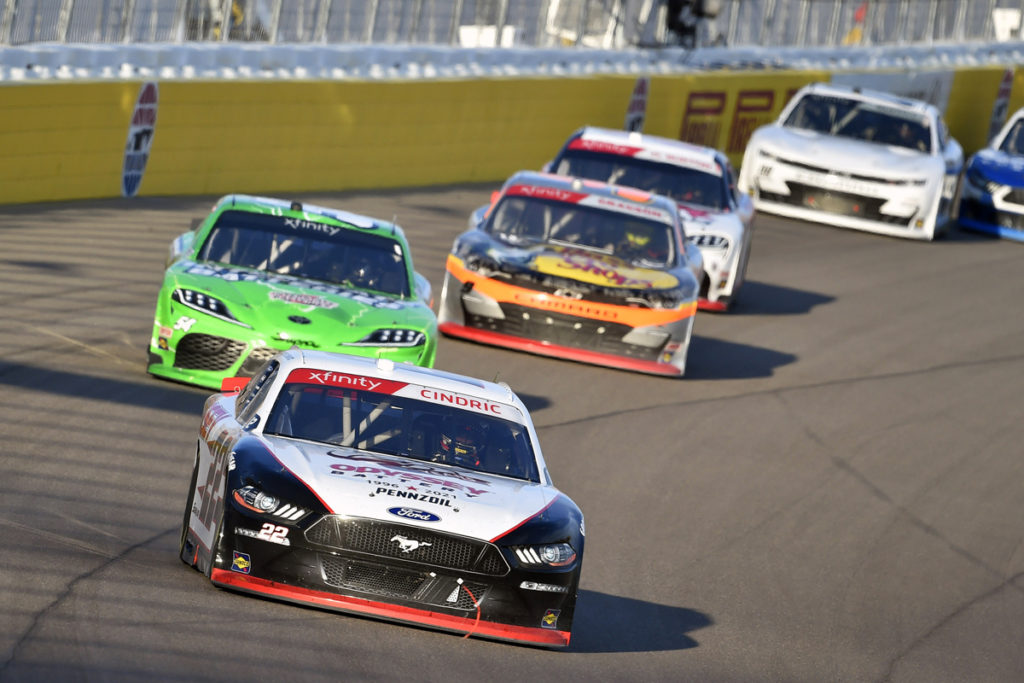
The final stage of the race is an all-out run for the finish line with no efforts spared. This is what has the audience sitting on the edge of their seats and make NASCAR races interesting. The points awarded in the final stage are many more than in either of the preceding stages. Many drivers draft in the first two stages to save their fuel and tyres during the first two stages. This helps them go all out in the last stage.
Drafting is a technique adopted by NASCAR drivers to increase the speed of their cars. The car in the rear slides into the sweet spot behind the leading car. This is the place where the car behind encounters the least resistance from the dirty air coming from the first car. This helps increase the speed of the following car while saving on fuel and the tyres. Drafting also helps the front car increase its speed and conserve fuel. This is because the rear car diverts the path of air that flows from the rear of the leading car to around itself.
The NASCAR tyres are designed to last between two pit stops. Drivers have to manage their tyres to last the distance. With the cars running so close to each other, many accidents occur due to the bursting of abused tyres. That causes the race officials to show the caution flag. The race stops and is restarted. The crashes sometimes result in pile-ups and drivers use the yellow flag periods to change their tyres. By doing so, they can reduce the time lost in another pit stop.
What are playoffs in NASCAR?
NASCAR playoffs are confusing for a beginner to understand. NASCAR rules stipulate that a winner of the championship cannot be announced until the final lap of the final last race of the championship. A NASCAR season is divided into two parts: the regular racing season and the playoffs. Drivers accumulate points throughout the racing season. Sixteen drivers qualify for the playoffs. Among them, a driver who has won at least one race in the racing season is given preference. If there are fewer than sixteen race winners, the drivers with the highest accumulated points are accommodated in the sixteen.
The playoffs involve the top drivers competing in sixteen races called the “Round of 16. The scores of the drivers are reset when ten races are remaining. After the first three races, the scores of all the drivers are compared and the last four are eliminated. This three-race routine is repeated till 12 drivers are eliminated and only four drivers remain. With only one race remaining, whoever wins the final race is declared the Champion of that Cup Series.
What are the various flags used in NASCAR?
NASCAR fans wait with bated breath to hear the words “Gentlemen, please start your engines.” This is an indication for drivers to get ready for the start of the race. Once the race starts, drivers have to obey whatever is cited by the officials by displaying various flags. Erring drivers are penalised even to the extent of disqualification. What are the flags used by NASCAR race officials and what do they signify?
- Green flag: A green flag indicates the start of the race, end of the caution period or that the pit lane is open. At the start of a race, a green flag is a signal to the drivers to floor their accelerator pedals.
- Yellow flag: A yellow flag is a request to the driver to drive with caution locally. It may be used when the debris is strewn across the track or when a phase of a race ends. Two yellow flags require the driver to be cautious across the length of the course. This may be used in case of severe accidents or crashes on the course.
- Blue Flag with a yellow diagonal stripe: This flag warns the driver of a faster car approaching behind him. The driver is required to give way to this car.
- Blue Flag: A plain blue flag is the indication of a “hard to see hazard” ahead. Drivers are required to slowly approach the hazard and move past it.
- White flag: A white flag indicates the start of the final lap. Drivers go racing for the finish line in the hope of crossing over the line first.
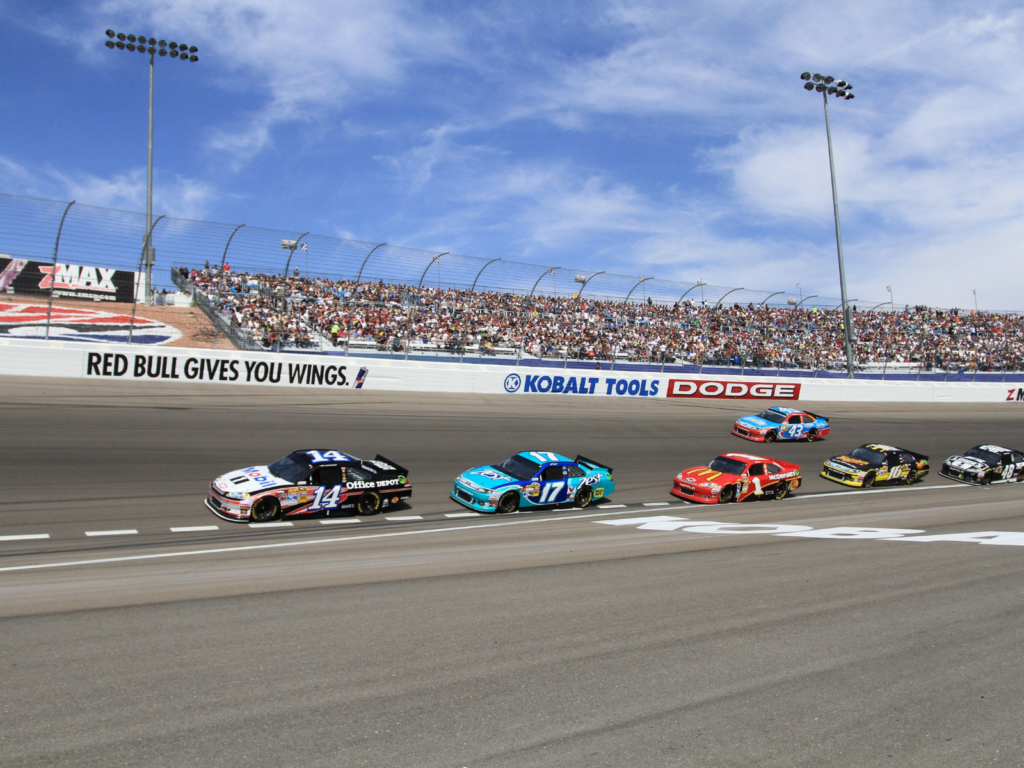
- Red Flag: When the red flag is displayed it means that the session or the race is suspended. This happens when it rains in a Cup Series race or in case of a very serious crash or accident.
- Black Flag: A solid black flag is a direction for the driver to go back to the pits. The flag is used when the officials want to penalise a driver for some infringement. The flag is also used in case the car suffers from mechanical failure or any other difficulty.
- Black flag with diagonal white cross lines: This flag indicates that the driver has to returns to the pits to serve a penalty. It may also be shown to a driver whose car is failing to maintain the minimum speed. The driver may repair the car and rejoin the race after serving the penalty time.
- Green and white chequered flag: A green and white flag indicates the end of a session of racing. Following it the yellow flag will be displayed indicating caution while driving.
- Black and white chequered flag: A black and white chequered flag indicates the end of a race and is shown as the cars cross the finish line.
What NASCAR terminology does a beginner have to be familiar with?
Understanding any sport takes a lot of reading, watching and time. Once a beginner is familiar with the terms and the colloquialisms of the sport it becomes a lot easier to understand it. The newcomers get to understand the conversations that the drivers have with their crew. They also understand what the commentators mean when they use a particular word or a phrase to describe a situation. To get you on your way, we will talk about a few terms that are routinely used in NASCAR.
- Camber: Camber is the angle at which the tyre of a car has worn more on one side. Some car tyres wear out unevenly. This leads to an inclination of the tyre to one side of the vertical. If the tyre is inclined to the outside of the vertical, the camber is called positive camber. A tyre leaning to the inside of the vertical is said to have negative camber.
- Dirty air: Dirty air is the turbulent air that a fast-moving car leaves in its wake. Dirty air not only acts as a drag on the car that generated it but also creates a hindrance to the cars following the leading car.
- Downforce: Downforce is a combination of the gravitational force and the aerodynamics of a fast-moving car that pushes it down on the track. The more downforce, the more the grip a car gets on the track. But a greater downforce also causes more dirty air and therefore more drag on the car. Aerodynamic engineers finely balance the downforce against the drag of a NASCAR car.
- Drafting: Drafting is the very close tailing of a car. It takes two cars to draft and is most often engaged in by teammates. Leading drivers also prefer to draft to save on fuel and tyres. The trailing car comes close to the leading car till it feels less drag from the dirty air of the leading car. This helps the leading car by smoothening the airflow in its wake by the trailing car. Both the cars can cruise at a higher speed by retaining the formation. This saves fuel and the tyres of both the cars.
- Marbles: When cars are racing at a high speed the car tyres get very hot with friction from the track as well as the heat generated by the brake pads. This high temperature accelerates the deterioration of the tyres. Some of the heated rubber gets ingrained into the track which helps the cars get a better grip on the track. The other worn rubber comes off as small rubber balls which are called “marbles” in NASCAR lingo.
Marbles are dangerous to drivers. They get blown to the outside of the track by the speeding cars. When a car’s tyres venture onto the marbles, the marbles act like rollers. On turns, drivers may lose control of the car and skid off the track.
- Restrictor plates: NASCAR stipulates the use of restrictor plates on fast superspeedways like Daytona and Talladega. These are square aluminium plates placed at the air intake of the engine. The restricted air supply also ensures that lesser fuel enters the combustion chamber of the engine. This effectively reduces the speed of the cars. Cars without restrictor plates are known to have reached speeds of 389 kilometres per hour (236 miles per hour) on these courses.
Conclusion
It takes patience to get to know a sport. A lot of reading and watching of a sport will hasten the process of understanding a sport. NASCAR is an exciting motor racing sport that has millions of fans worldwide. There are also so many races, that repeated watching of the racing can familiarise one with the sport quickly. To give you a headstart, we have outlined the fundamental rules and terms that are commonly used in NASCAR racing. Once you get the hang of it, you will become a lifelong NASCAR fan.
You may also be interested in: NASCAR tires explained






